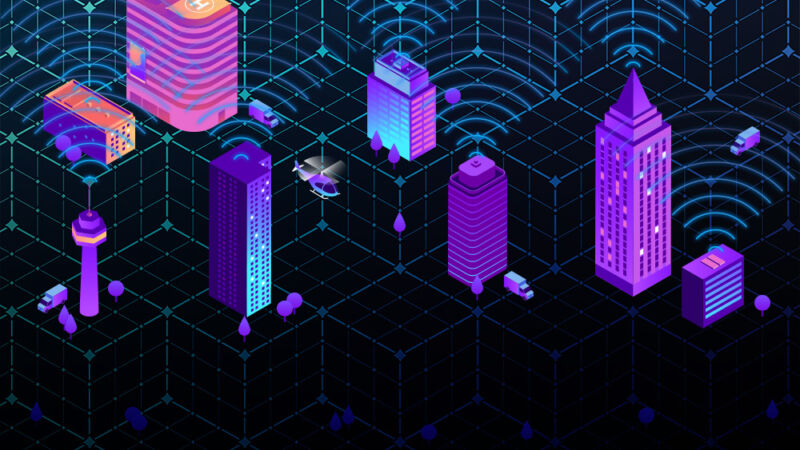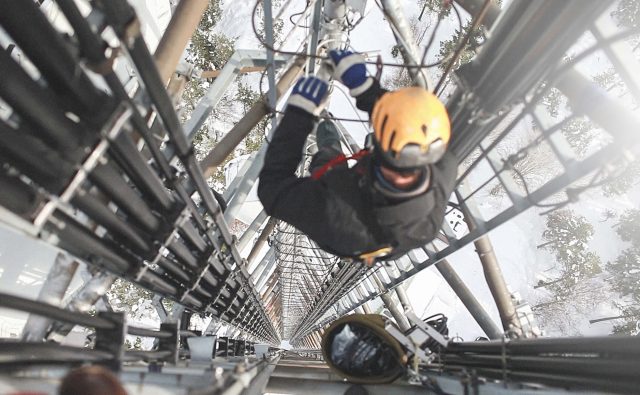Taking 5G to work, in offices, and on the factory floor—will it help?

Enlarge / Artist's impression of 5G. (credit: Aurich Lawson / Getty Images)
In our last 5G explainer, we talked about the potential impact of the 5G cellular protocol-and the various bands over which it operates-on gaming. Today, we're going to explore what the improved throughput and latency associated with 5G networks might mean for work rather than play.
For the most part, the improvements are iterative, not revolutionary-and they're the same ones we talked about in the gaming piece. Upgraded equipment in towers means lower network latency, and mmWave connections to outside devices mean less contention for sub-6GHz devices inside buildings.

This person is adding additional Gs to a transmission tower. (credit: morfous / Getty)
Where mmWave connections to devices are possible-which for the most part, will mean "outdoors, in high population areas"-users can expect extremely high throughput and low latency. But mmWave has far lower range and penetration than the sub-6GHz connections we're familiar with, and we don't expect indoor users to be able to get a connection. You don't necessarily need a clean line of sight to a tower-the massive MIMO antenna arrays mmWave deployments use are highly directional and can make good use of RF reflections to get around obstacles-but punching through an exterior wall to an indoor space is almost certainly too much to expect.
Read 22 remaining paragraphs | Comments